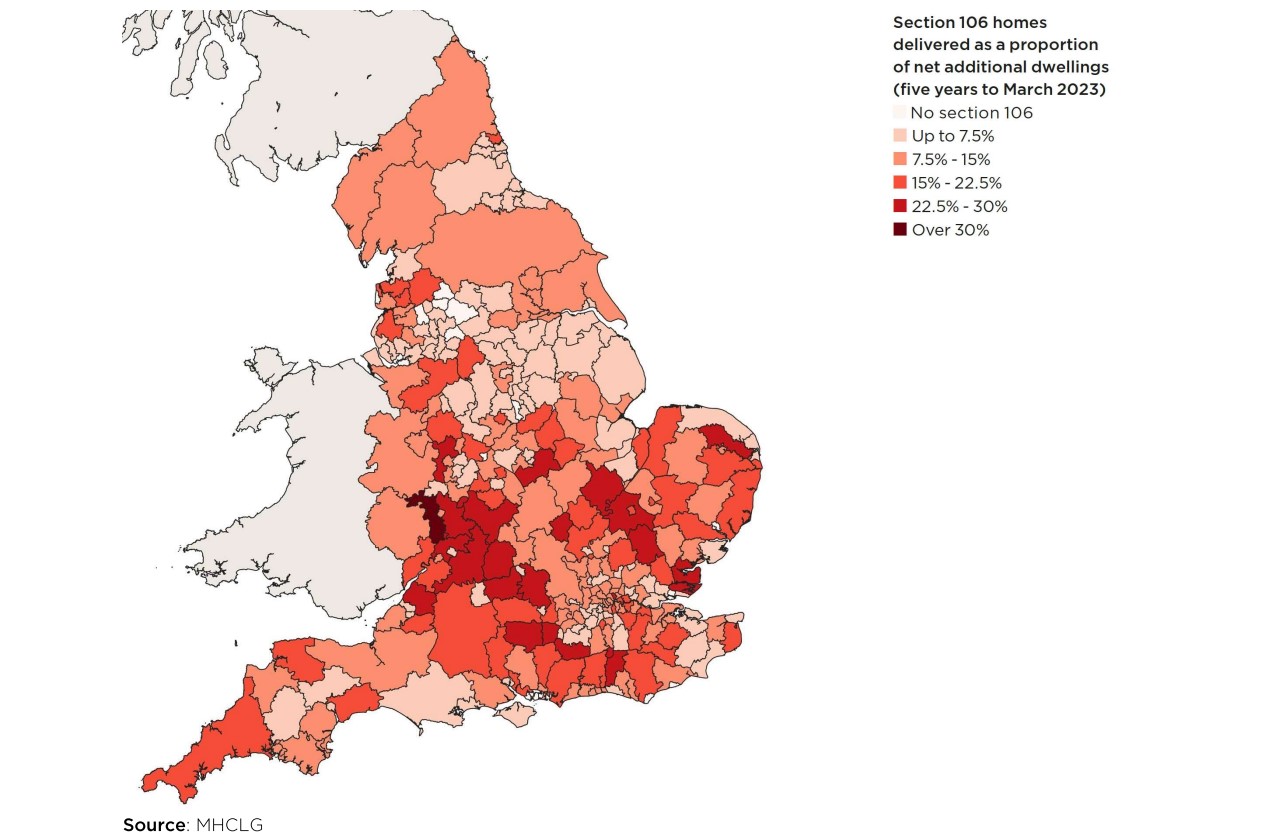Last week, the quarterly planning application statistics were released highlighting a 9% fall in received applications from the same quarter a year earlier. Planning consents in England have fallen to 231,200 homes in the 12 months to June 2023, the lowest level since 2014. A consistent decline makes the Government target of an additional 1.5 million dwellings in this Parliament a challenging ask. Many of the permissions which have made their journey to consent are stuck. So we have falling consents and a logjam of unviable permissions.
In my post last week, I touched on part of the reason for the logjam: the increasingly parlous state of the Housing Association sector. Over half the sector is now out of the 106 market.
There are two issues here. The first is the vanishing market for takers of affordable homes. The second is the misalignment between local planning policy and what development viability actually can deliver. The heat map below is a useful reminder of just how wide the misalignment has become. Section 106 homes delivered as a proportion of net additional dwellings rarely can exceed more than 20% of the net additional dwellings in an area, yet in many areas you will find councils expecting that developers can deliver at least a third or even half their homes through a Section 106 Agreement.

Savills highlighted in a recent research note only 38 LPAs have been able to deliver more than 20% of new homes through S106 affordable and this is predominantly in the South East. In almost a third of LPAs it is not viable to deliver more than 5%. This is 5 year data. I would hazard an educated guess that adjusted for the changes of the last two years, these percentages will not hold. Cost inflation and interest rate rises will have reduced that pool of 38 LPAs even further.
There are likely to be further announcements from Government over the coming weeks and it maybe that policy makers have recognised this fundamental problem. There are two pathways to resolve this. The first is an acceptable level of public subsidy is injected into the system to enable affordable housing delivery. This in my view is many multiples of the current national affordable housing programme.
The alternative path is a reduction in affordable housing requirements if developers can demonstrate they can get on site, that the viability isn’t there and or there are no takers.. A pragmatic solution would be to enable developers nationally to reduce their affordable requirement perhaps by half on current consents in return for a guaranteed start in the next 12 months. It’s not a silver bullet because of construction capacity.
There are tough trade offs ahead: more money from the taxpayer or an acceptance that to unlock housing supply, there will be a reduction in specific tenures of affordable homes to enable homes more generally to come forward. Ignored and the trend downwards continues.










